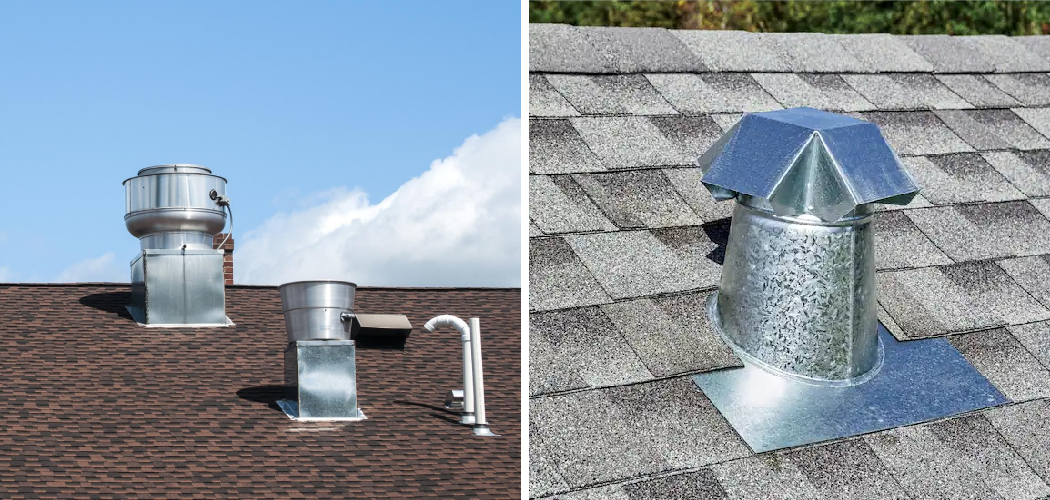Clogged vent pipes can lead to many issues in your home, such as smelly air, mold growth, and water damage. If not addressed quickly, the clog can eventually cause serious pipe blockages and damage that may require costly repairs. Knowing how to unclog a vent pipe is an important skill for any homeowner.
A major advantage of using a vent pipe to unclog your drain line is that it can stop the problem from recurring. By clearing out any blockages or debris, you can ensure a smooth and consistent flow of water in your pipes.
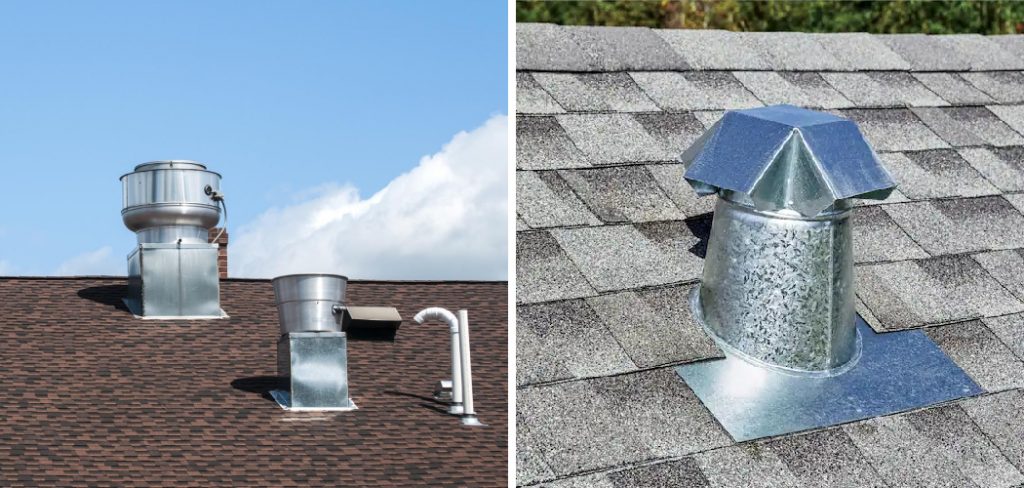
This can help to protect against future clogs and save you time and money on costly repairs or replacements. You can find step-by-step instructions on how to unclog vent pipe in this blog article.
Tools You Will Need
- Plunger
- Wet/Dry Vacuum
- Wire Hanger
- Liquid Drain Cleaner
- Snake or Auger
- Chemical Foam Cleaner
- Sewer Rods or Cable Augers
- Air Compressor and Blow Gun Attachment
- Power Washer with Vent Pipe Cleaning Attachments
- Electric Eel Drain Cleaner
- Hydro Jetting Machine
- Sewer Camera Inspection Equipment
Using the proper tools is essential to unclog a vent pipe successfully. Plungers are commonly used to dislodge pipe blockages, while wet/dry vacuums are great for sucking out debris from pipes.
Step-by-Step Processes for How to Unclog Vent Pipe
Step 1: Inspect the Vent Pipe
Before attempting to unclog the vent pipe, take a few minutes to inspect it. Look for any obstructions blocking the flow of air or water. If you find anything, Clear the obstruction if possible. Carefully place the plunger over the drain and begin pumping vigorously up and down to push the blockage out of the pipe.
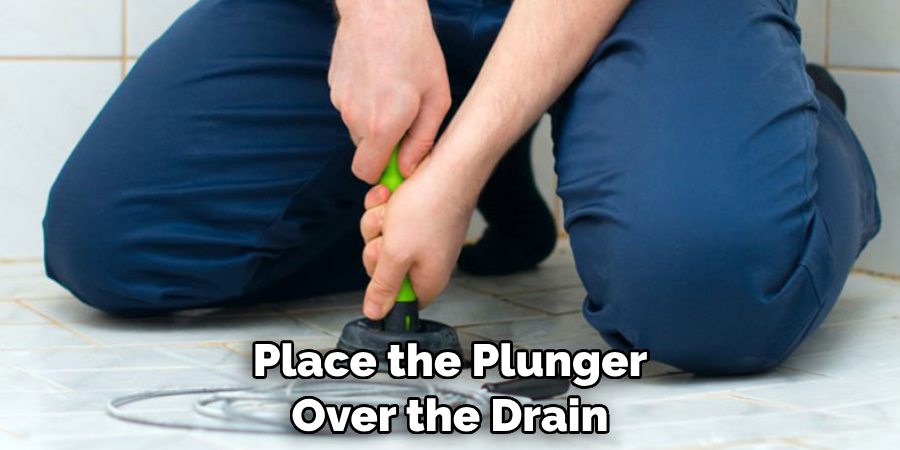
Step 2: Use A Drain Snake
If plunging does not work, you can use a drain snake to try and unclog the vent pipe. Insert the snake into the pipe past the obstruction and attempt to pull it out by turning the crank on the snake. If you cannot unclog the pipe, you can use a pressure washer to help flush out the obstruction. This will require a bit of skill and caution, as too much pressure could damage the pipe itself.
Step 3: Use Baking Soda & Vinegar
Pour one cup of baking soda down the drain, followed by one cup of vinegar. Wait 15 minutes and then flush with boiling water to help break up any blockage. Boil a pot of water and pour it slowly down the drain in an effort to push out any obstructions that may be blocking the vent pipe.
Step 4: Use Wire Hanger To Remove Obstruction
If the obstruction is visible, you can attempt to remove it by straightening out a wire hanger and using it to pull it out. This method should only be attempted as a last resort since caustic soda is dangerous if mismanaged. Mix one part caustic soda with two parts of water, and then pour the mixture down the drain.
Step 5: Remove the Vent Pipe From the Wall To Clean the Blockage
If all else fails, you can remove the vent pipe from the wall and try cleaning it manually using a sponge or brush. If none of these methods successfully unclog the vent pipe, then it is best to hire a professional plumber for help. A plumber will be able to identify the source of the problem and provide an effective solution. Good luck!
This content should not be used verbatim without citing the original author or repurposing it with your own words. Cite the source if you use this content for research.
Safety Precautions for How to Unclog Vent Pipe
- Wear protective gear such as gloves, safety glasses, and a dust mask before beginning the unclogging process
- Make sure that power sources are turned off to avoid electric shock or fire.
- If, physically inspect the vent pipe for any breaks or damages before continuing with the unclogging procedure.
- Use a plunger or auger to remove any blockages in the vent pipe.
- When using chemical cleaners, ensure they are safe for use with the type of pipes you have.
- If tree roots have been identified as the cause of the clog, snaking can be used to cut them away and clear the blockage.
- After the vent pipe has been unclogged, inspect it to ensure the blockage has been completely removed. If any remaining debris is found, remove it with a vacuum cleaner or other tool.
Once all safety precautions have been taken and all necessary steps have been completed, enjoy the results of your hard work by taking pride in maintaining a healthy and functioning plumbing system.
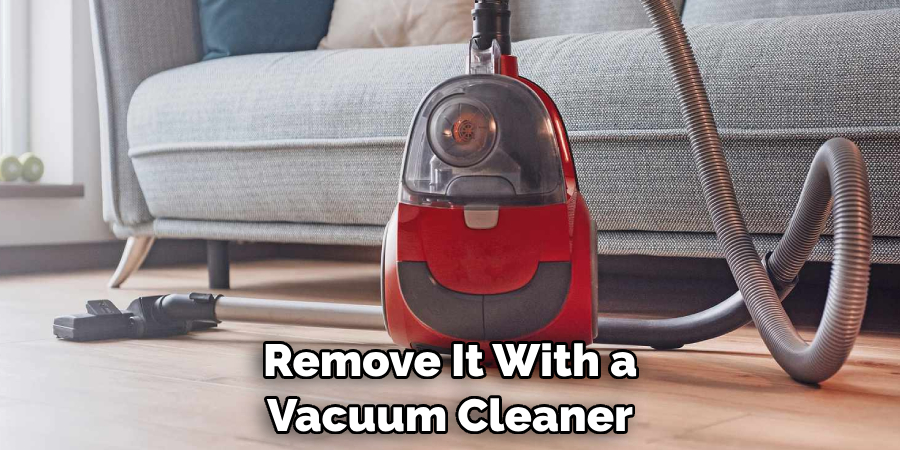
Are There Any Risks Associated With Trying to Unclog the Vent Pipe Yourself?
Although trying to unclog a vent pipe yourself may be tempting, it is important to consider the risks of doing so. Anytime you work with electricity and plumbing fixtures, potential hazards are involved.
One of the biggest dangers of attempting to unclog a vent pipe yourself is the risk of electrical shock or electrocution; if the fixture is improperly wired or you accidentally touch a live wire, you could be electrocuted.
Additionally, there is the risk of water damage to your home if you cannot unclog the vent pipe and the situation gets out of hand. Lastly, you can cause further damage to the piping system if done incorrectly. Therefore, it is best to contact a professional to avoid these risks and ensure the job is done properly.
In conclusion, unclogging a vent pipe can be dangerous and should only be attempted by experienced professionals. Attempting to do it yourself may be tempting, but the potential risks are too great.
Is There Any Way to Prevent Future Clogging of the Vent Pipe?
Yes, some preventive measures can be taken to reduce the chances of your vent pipe becoming clogged in the future. First, make sure you regularly inspect and clean out your vent pipes. This should be done at least once a year to ensure there is no buildup of debris or other materials that could block the pipe.
Use a plumber’s snake or a high-pressure water hose to clean out the pipes thoroughly. Second, make sure that any open drains are properly covered to reduce the possibility of leaves or other debris being able to enter the pipe. If you have trees around your home, prune them regularly so their branches do not hang too close to the vent pipe.
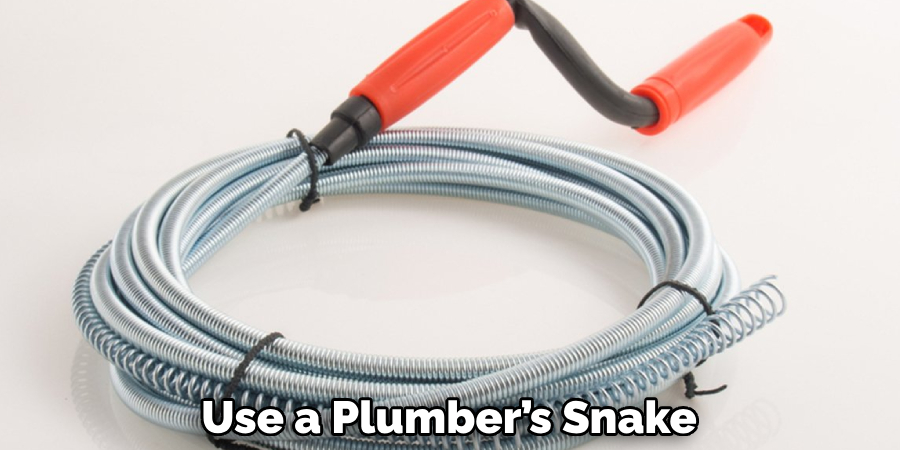
Third, check the area around your house for areas where water may pool and cause increased heat. This can lead to condensation buildup, which can contribute to clogs in the pipe. Fixing these issues can help reduce the chances of future clogging.
Finally, if you use chemical cleaners or drain openers on your pipes, make sure you are using them in moderation and not over-using them. Chemicals can cause buildup and damage the pipes over time.
Are There Any Special Precautions That Should Be Taken When Unclogging a Vent Pipe?
Yes, several safety precautions should be taken when unclogging a vent pipe. First, you should always wear protective eyewear and gloves to protect yourself from debris or substances entering the air while unclogging the pipe. You should also ensure that all electrical devices in the area are turned off before beginning the procedure.
Additionally, make sure that you have good ventilation in the area, as this will help protect you from any toxic fumes or gases that may be present. Finally, be aware of your surroundings and watch for any potential risks, such as sharp objects or slippery surfaces. By taking these safety precautions, you can ensure a safe and successful unclogging procedure.

What Are the Signs to Look for That Indicate a Clogged Vent Pipe?
When a vent pipe becomes clogged, several signs indicate it needs to be unclogged. One of the most common signs is a foul odor from drains and fixtures. This is caused by trapped air, sewer gas, and wastewater backing up through the pipes due to the blockage.
Another sign is when water takes longer than usual to drain from fixtures or if multiple fixtures are draining slowly. Additionally, gurgling sounds from the pipes usually indicate that air is trying to escape past a blockage in the vent pipe. If you notice any of these signs, it is important to take action and unclog your vent pipe as soon as possible.
To help prevent future clogs, make sure that all drains and fixtures are used properly and do not contain any materials that could block the pipe. Additionally, it is important to regularly inspect your vent pipes for signs of wear or damage.
If you notice any issues, take action as soon as possible to prevent a clog from occurring. Cleaning out your vent pipes periodically can also help ensure they remain unclogged. By taking these preventive measures, you can keep your vent pipes functioning properly and avoid having to unclog them in the future.
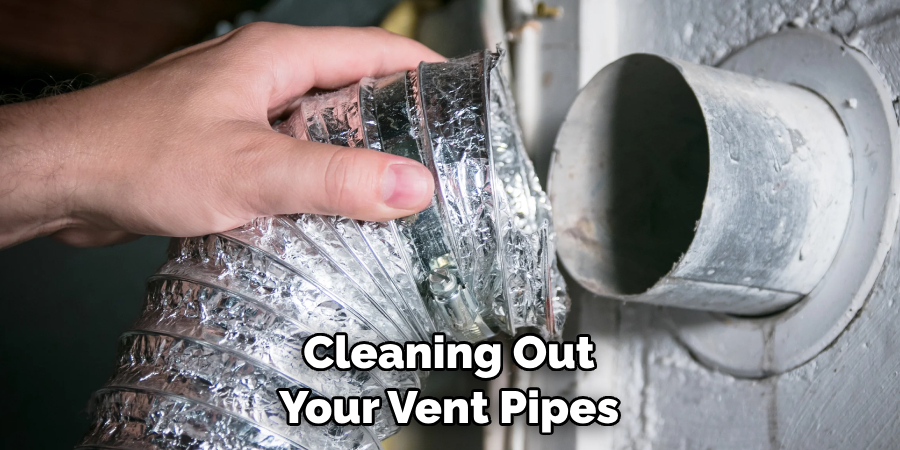
Conclusion
In conclusion, unclogging a vent pipe is not too difficult and can be done fairly easily with the right tools and knowledge. It is important to ensure the blockage is completely cleared so that air can move freely through the pipes, preventing any future build-up. If you are uncomfortable taking the task on yourself, it may be best to consult a professional plumber for assistance.
Remember to take safety precautions when working with the vent pipes, such as wearing appropriate clothing and protective gear. I hope reading this post has helped you learn how to unclog vent pipe. Make sure the safety precautions are carried out in the order listed.

